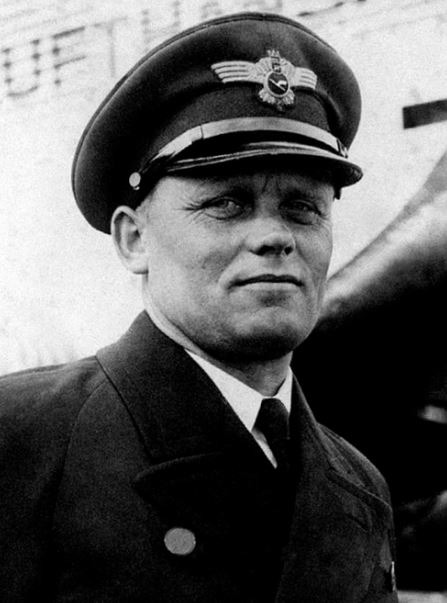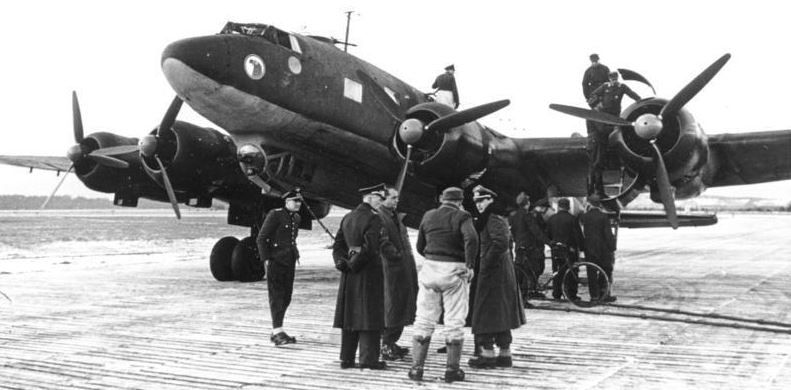Hans Baur as a Pilot
Hans Baur begins his story by saying, “Without the war, I may have spent my life in an office.” Born in southern Bavaria in the late 19th century, Baur had an ordinary childhood in Munich until 1914. For countless millions across Europe, the First World War marked a distinct caesura, whether in the wanton carnage on the battlefields or the political and economic whirlwind that followed. The war gave Baur a skill and career he wouldn’t have otherwise had: flying.
As a pilot on the Western Front, Baur soon demonstrated a natural skill and comprehension of the pilot’s art, not least in the fact that he survived the war, no small feat in those early days of aerial combat. In the postwar years, he gained a reputation for safety and punctuality and was named one of the first six Luft Hansa pilots in 1926. He also piloted the Berlin-Munich-Rome route in 1931 and flew over a million kilometers for the airline.
Hans Baur as Hitler’s Pilot
So, Hans Baur met Hitler. Hitler was persuaded that he needed more creative techniques to reach his audience during the 1932 election campaigns, and Baur was identified as someone whose flying expertise could help him campaign by air. Such a step would be typical for any modern politician, but it was bold and original in the 1930s, when flying was in its infancy and considered risky and strange. Hitler made numerous grandstand speeches per night, while his opponents used radio or gave set-piece speeches to the political and media elite. It was a more efficient use of time and a propaganda coup, showing him as a contemporary, forward-looking politician ready to embrace new technology.
When the Nazis won the 1932 election, Hitler was convinced of the political effectiveness of air campaigning, having overcome his own safety fears. Hitler was so amazed by Baur’s skill that he never flew again. Baur became Hitler’s pilot in February 1933. The personal and professional relationship lasted until Hitler’s death in 1945. Baur, a bluff, no-nonsense Bavarian, became one of Hitler’s intimates, someone he often entrusted with his life.
Baur was in an uncommon position in the Third Reich, similar to Hitler’s photographer Heinrich Hoffmann, in that he was neither politically nor professionally dependent on Hitler. His views and observations are clear of the politicking and plain ambition that sometimes cloud other perspectives. Baur relished the distinction his work as Hitler’s pilot provided him, and in his book he celebrates the time he spent flying Reich and Allied leaders, including Göring, Mussolini, and King Boris III of Bulgaria. I flew the world’s powerful was the original German title of his book.
Baur was an eyewitness to many of the Third Reich’s crucial incidents, including the Night of the Long Knives in 1934, Ribbentrop’s momentous journey to Moscow in 1939 to conclude the Nazi – Soviet Pact, and Hess’s flight to Britain in May 1941. On one level, his narrative may be read as an entertaining history of those chaotic years, although by one close to Nazi leadership. On another level, it’s a portrayal of the inner circle: its people and petty rivalries.
Hans Baur and his book
Highlights abound in his book. One is a brief comment by Baur that would spark one of the 20th century’s most famous conflicts. Baur reports on page 177 that one of the aircraft used to transfer Hitler’s possessions from the Reich Chancellery in April 1945 failed to arrive at its destination in southern Germany and was thought to have crashed. Hitler was ‘very unhappy’ about the loss of the jet because it had ‘very valuable documentation’ that would ‘show posterity [his] actions’. A later generation hungry for ‘Hitleriana’ expanded and exploited this one reference to create the ‘Hitler Diaries’ forgeries of the 1980s.
Baur’s description of his escape from Hitler’s bunker at the end of the war, alongside Bormann, Stumpfegger, and others, is another gem. The paragraph is especially important since it’s one of the few eyewitness reports of Martin Bormann’s demise, which was a mystery until recently. Baur didn’t escape the Soviets in Berlin in May 1945 like Bormann. He was taken near Lehrter Station, beginning his long captivity. Baur, a former member of Hitler’s inner circle, was of particular interest to the Soviets, who believed he may have flown Hitler out of besieged Berlin and had connections to plundered art, especially the ‘Amber Room’. Baur disappointed his Soviet interrogators because he insisted Hitler died in the Berlin bunker and was ignorant of Third Reich politics. In principle, by capturing Hitler’s pilot Baur, his valet Heinz Linge, and his chauffeur Erich Kempka, the Soviets had unparalleled insight into the Third Reich and its leader. They planned to use their three captives to assemble a “Hitler Book” for Stalin’s amusement. Baur was pulled from the project since his knowledge wasn’t enough.
Hans Baur’s Imprisonment
Baur was a pilot, not a politician. The Soviets held him for ten years until 1955. It’s hard to see what crime, other than guilt by association, may have warranted such punishment, and Baur shines at portraying the innocent political ingénue. Baur said he didn’t know about the Holocaust until after the war and didn’t believe it. In his defense, proximity to events can cause myopia or insight.
The narrative has another side, as always. Baur joined the SS in 1933, albeit this may have been an honorary status to commemorate his role as Hitler’s pilot. Baur joined the Nazi Party in 1926, before it was fashionable and before his first meeting with Hitler. Baur, Kempka, Linge, and Hitler’s former secretary Johanna Wolf retained a fervent, unflinching commitment to their former employer.
As late as the mid-1980s, Baur praised Hitler as a ‘really amazing man’ and a ‘kind and thoughtful man’. This may be disregarded as enduring allegiance to the man who influenced Baur’s career and life, and a determination not to disavow those exhilarating, formative years just because they were politically embarrassing. Baur’s politics had more ‘depth’ than he told his Soviet interrogators, though.
Conclusion:
Despite its complexity, his book is a fascinating and revealing book from someone in Hitler’s closest circle who had his trust. Hans Baur is a likable guide through the volatile Third Reich. Though he doesn’t address the topic in his book, his tone suggests he had few regrets from flying for international leaders. His alternative was to work in an office. The title of his book is “I Was Hitler’s Pilot: The Memoirs of Hans Baur”.

